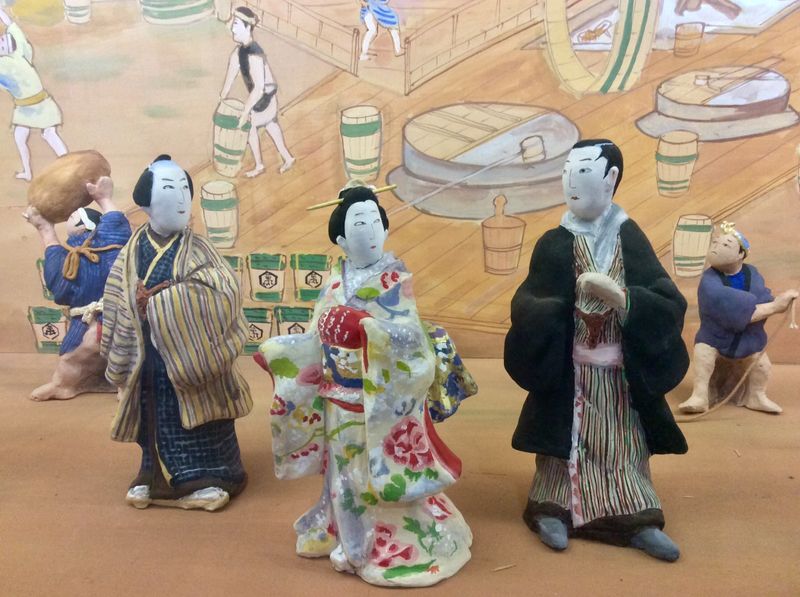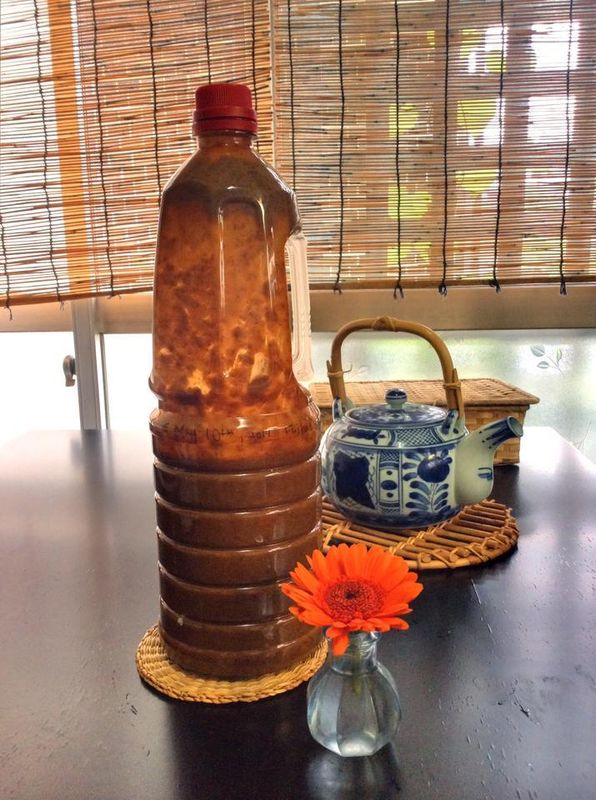May 31, 2023
Soy Sauce Exploring in Chiba Prefecture
Whenever I mention to Japanese people that I live in Noda City, Chiba Prefecture, I often get asked “Does it really smell of soy sauce?” It’s true! When the soy sauce manufacturers are in full swing, the center of the town is fragrant with the warm, malty smell of fermentation. This olfactory experience has been part of Noda City for nearly 400 years.

Stylish Noda citizens in front of the shoyu brewery in Kikkoman's museum display
Noda is known as “Soy Sauce City” for its two manufacturers. The ubiquitous Kikkoman soy sauce and other condiments have their origin here, starting with the cooperation of eight soy sauce brewing families in the Meiji era. The one independent holdout is Kinoene, a company that is known for white shoyu made with more wheat than soy beans.

Kinoene Soy Sauce, an industrial heritage building
While Kinoene’s factory building, designated as an industrial heritage site, can be appreciated from the street, Kikkoman’s Monoshiri Shoyukan welcomes visitors by reservation to tour the factory museum. You get to see the manufacturing process, the history of the town, and the company’s memorabilia.
Noda City isn’t the only soy sauce brewing center in the prefecture. Out on the Pacific coast, Choshi City is home to Yamasa, a rival to Kikkoman, and Katori City has Chiba Shoyu, a boutique brand that even does specialties like halal shoyu. Adjacent to Katori City is the tiny town of Kozaki. The tiny town’s road station, Hakko no Sato, features all kinds of fermented products.
It’s here where you’ll find products made by Fujihan, a tiny brewer that’s been making soy sauce since the late 1800s. I participated in one of the soy sauce-making workshops with Takahashi-san, the president of the company.

Make, and shake, your own soy sauce moromi mash
In plastic PET bottles, we combined salt sourced from the Pacific Ocean, water from the brewery’s own spring, and locally grown wheat and soybeans, the same ingredients he uses in his factory brewing. Takahashi-san explains the process and the chemistry involved in the process that results in moromi, the mash, that needs turning every few days to a few weeks.

My PET bottle soy sauce in progress
After many months of tending, I finally drained the brown liquid in a cloth bag. The result was a pungent and very soy-saucy liquid. But I’m afraid my first attempt failed. It smelled off. I might take another crack at it this year with the help of Takahashi-san’s workshop.
Meanwhile, I stock my kitchen with a variety of soy sauces from each of the brewers. While they're all made from essentially the same ingredients, the koji and the balance of ingredients, and the types of vats they're brewed create subtle differences in flavor and body.
Have you tried your hand at making traditional fermented foods in Japan like pickles, miso, or natto? How did it work out?



0 Comments